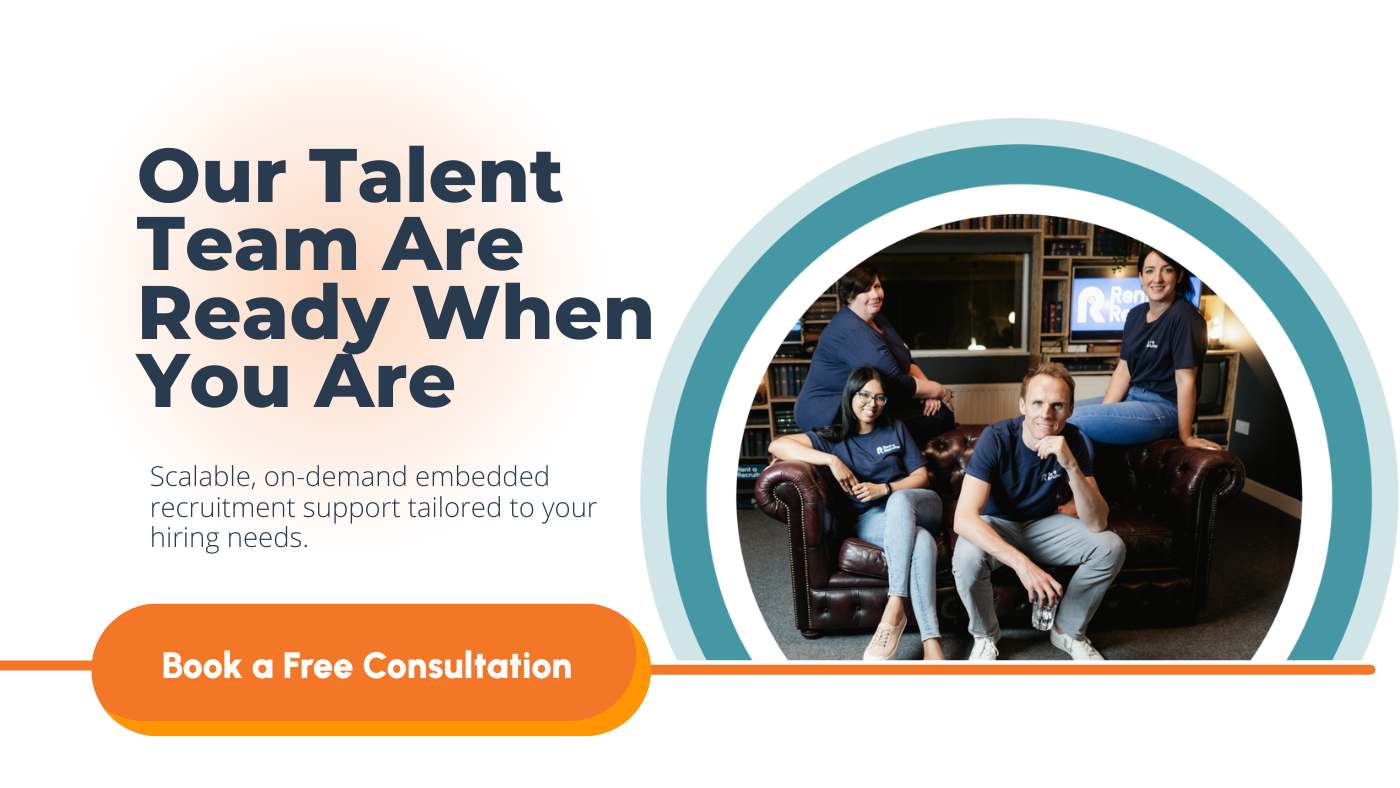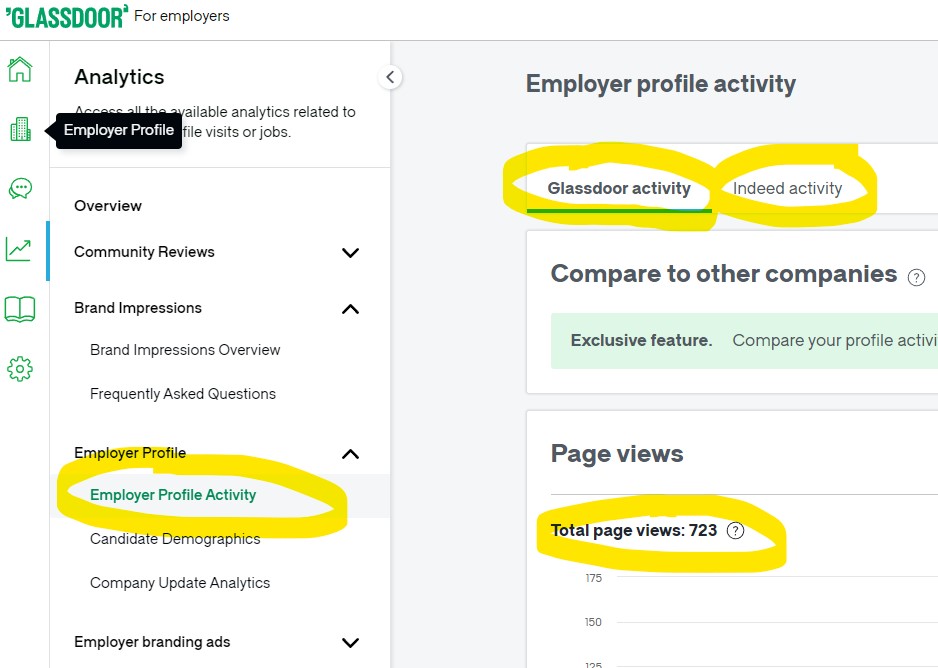Recruitment is the backbone of any successful organisation, and finding the right talent can be daunting. For businesses navigating this challenging landscape, outsourcing recruitment and selection processes has become an effective solution. From saving time to accessing top-tier talent, the benefits of outsourcing recruitment and selection process are far-reaching.
In this article, we will dive deep into the recruitment process outsourcing benefits and explore how this practice is reshaping the way companies hire. Whether you’re a small business or a large corporation, this guide will show how outsourcing can revolutionise your hiring efforts.
What Is Recruitment Process Outsourcing?
Before exploring the advantages, it’s essential to understand what recruitment process outsourcing (RPO) entails. RPO involves hiring an external partner or agency to manage all or part of your company’s recruitment needs. These agencies specialise in sourcing, screening, and hiring the best candidates tailored to your business requirements.
By partnering with an RPO provider, companies can access a team of experts equipped with tools, resources, and strategies to find and secure top talent.
Why Companies Choose to Outsource Recruitment
Businesses turn to outsourcing for many reasons. Whether due to limited internal resources or the need for faster hiring, outsourcing offers an effective way to address recruitment challenges.
Here are some key motivations for choosing this approach:
- Lack of in-house recruitment expertise.
- High turnover rates.
- Desire to reduce hiring costs.
- Need for specialised talent acquisition.

Benefits of Outsourcing Recruitment and Selection Process
1. Cost Savings
One of the most significant advantages of outsourcing recruitment is the potential for cost reduction. Managing an in-house hiring team can be expensive, considering salaries, training, technology, and operational costs. An RPO provider eliminates many of these overheads, delivering cost-efficient solutions.
Additionally, external providers use data-driven hiring strategies, reducing the likelihood of poor hires, which can cost businesses thousands of dollars annually.
2. Access to a Wider Talent Pool
RPO firms have access to extensive databases and industry networks, giving them a broader reach than in-house teams. Whether you’re looking for niche skills or high-volume hires, these agencies can find candidates from local and international markets.
This benefit is particularly valuable for companies in industries with skill shortages or those expanding into new regions.
3. Faster Hiring Process
The longer a position remains unfilled, the more it costs your business. Outsourcing your recruitment can significantly accelerate the hiring process. Recruitment agencies use advanced technologies and streamlined workflows to identify suitable candidates quickly.
From job posting to onboarding, RPO providers ensure efficiency without compromising on quality.
4. Improved Hiring Quality
Recruitment agencies specialise in finding the perfect fit for your company. With their expertise, they assess candidates using rigorous screening techniques and behavioral assessments. This ensures your organisation benefits from hiring top-performing individuals who align with your company culture.
5. Scalability and Flexibility
Outsourcing recruitment allows businesses to scale hiring efforts up or down depending on their needs. Whether you’re dealing with seasonal spikes or a sudden hiring freeze, RPO providers offer the flexibility to adapt without incurring additional costs or burdening your internal team.
6. Advanced Technology and Analytics
Modern recruitment is driven by data. RPO providers leverage artificial intelligence, applicant tracking systems (ATS), and predictive analytics to optimize the hiring process. These tools allow them to identify the best candidates efficiently, while also providing insights to improve your long-term hiring strategies.
7. Reduced Administrative Burden
Recruitment involves a myriad of tasks, including writing job descriptions, scheduling interviews, and conducting background checks. Outsourcing transfers this workload to professionals, freeing up your HR team to focus on strategic initiatives such as employee engagement and retention.
8. Enhanced Employer Branding
Your company’s reputation as an employer plays a critical role in attracting top talent. RPO providers often have expertise in employer branding, helping to craft compelling job ads and maintain a positive candidate experience. This not only improves hiring outcomes but also strengthens your brand in the job market.
Recruitment Process Outsourcing Benefits for Small Businesses
For small businesses with limited resources, the benefits of outsourcing recruitment are particularly compelling. An RPO provider can function as an extension of your HR team, offering expertise that might otherwise be inaccessible.
By outsourcing, small businesses can compete with larger corporations in attracting top talent without overspending.
Challenges of Outsourcing Recruitment and How to Overcome Them
While the benefits are undeniable, outsourcing recruitment is not without challenges. Common concerns include:
- Loss of control over hiring decisions.
- Cultural misalignment between the provider and the company.
- Dependence on an external party.
However, these challenges can be mitigated by selecting an experienced RPO provider with a proven track record. Establishing clear communication, defining goals, and maintaining a collaborative relationship are key to success.
When to Consider Outsourcing Recruitment
Not every organisation requires outsourced recruitment, but certain scenarios make it an ideal solution. These include:
- Rapid growth or expansion.
- Difficulty in finding specialised talent.
- Limited internal HR capacity.
- High recruitment costs.
Assess your current hiring challenges and goals to determine if outsourcing aligns with your business needs.
How to Choose the Right RPO Provider
Selecting the right recruitment partner is critical to reaping the advantages of outsourcing recruitment. Here’s what to look for:
- Industry expertise and track record.
- Access to advanced recruitment tools.
- Transparent pricing and service agreements.
- Cultural alignment with your organisation.
Request case studies or client testimonials to gain insight into the provider’s performance.
Benefits of Outsourcing Recruitment for Startups
Outsourcing your recruitment and selection process is not just a short-term fix; it’s a long-term strategy for sustainable growth. By streamlining your hiring efforts and improving talent acquisition, this approach can contribute significantly to your business success.
Sustainable Growth Through Outsourcing Recruitment
Outsourcing your recruitment and selection process is not just a short-term fix; it’s a long-term strategy for sustainable growth. By streamlining your hiring efforts and improving talent acquisition, this approach can contribute significantly to your business success.
FAQs
What are the key benefits of outsourcing recruitment and selection process?
Outsourcing recruitment saves costs, improves hiring quality, accelerates the process, and provides access to a broader talent pool.
How does recruitment process outsourcing benefit small businesses?
It helps small businesses compete for top talent without overspending and reduces the burden on limited internal resources.
Can outsourcing recruitment improve employer branding?
Yes, RPO providers can enhance employer branding by crafting compelling job ads and ensuring a positive candidate experience.
What industries benefit the most from outsourcing recruitment?
Industries with high turnover rates, skill shortages, or rapid growth often benefit significantly from RPO services.
Is outsourcing recruitment suitable for startups?
Absolutely. Startups can save time and resources by leveraging the expertise of RPO providers while focusing on core business activities.
How do I choose the right recruitment outsourcing partner?
Look for experience, access to modern tools, industry expertise, and cultural alignment when selecting a provider.
Rent a Recruiter is an award-winning outsource recruitment service offering global Talent Acquisition across IT, Engineering, Manufacturing, Construction, Finance, and Healthcare. Our embedded solutions seamlessly deliver the talent you need as your business scales.
New AI-Powered Recruitment Tools: Launched by Rent a Recruiter
AI-powered recruitment tools are revolutionising hiring processes, and Rent a Recruiter is leading the way with two innovative solutions. Recognising the challenges HR professionals face in today’s competitive job market, Rent a Recruiter has introduced two new cutting-edge tools aimed at optimising hiring processes and enhancing the quality of recruitment outcomes. These tools – AI Salary Bot and Rate Your Recruitment Health Check Report are designed to help businesses hire faster, smarter, and with better precision.
Addressing Key Recruitment Challenges
Recruitment in today’s market is more complex. Employers must navigate evolving candidate expectations, rapidly shifting market trends, and the growing need for diversity and inclusion. Rent a Recruiter’s new tools directly address these challenges by providing data-driven solutions that simplify processes, improve decision-making, and deliver measurable results.

“By integrating AI-powered recruitment tools into our services, we enable HR professionals to concentrate on strategic decision-making,” says Barry Prost, Chair & Co-Founder of Rent a Recruiter and Dublin Regional Skills Forum. “Our goal is to leverage technology to empower employers to attract and retain top talent in today’s competitive candidate market.”
AI Salary Bot: An Essential AI-Powered Recruitment Tool
The AI Salary Bot is a revolutionary tool that offers real-time salary benchmarks and benefits data tailored to industries and regions in Ireland, the USA, and Australia. Unlike traditional methods, which often involve time-consuming manual research, this tool allows HR teams to quickly and accurately align their salary offers with current market trends.
By providing precise, region-specific compensation insights, the AI Salary Bot not only saves time but also enhances a company’s ability to make competitive offers that attract high-caliber candidates. This eliminates the risk of underpaying—or overpaying—and ensures alignment with industry standards, improving offer acceptance rates and helping businesses stay competitive in the talent market.
Recruitment Health Check: A Powerful AI-Powered Recruitment Report
Complementing the AI Salary Bot is the Recruitment Health Check Report, a free resource designed to help HR professionals evaluate their hiring strategies across four key pillars:
- Employer Branding: Assess how effectively your organisation communicates its value to potential candidates.
- Hiring Practices: Evaluate the efficiency, fairness, and effectiveness of your recruitment methods.
- Candidate Experience: Understand how candidates perceive your hiring process and identify areas for improvement.
- Diversity & Inclusion: Ensure your hiring practices foster a culture of equity and representation.
By completing a brief evaluation, users receive a personalised report within 24 hours. This report includes a detailed breakdown of their performance in each area, along with actionable recommendations to optimise processes. Businesses can use these insights to create stronger employer branding, improve candidate engagement, and build inclusive hiring frameworks.
Empowering HR Teams with Data-Driven Insights
The integration of AI-powered tools into recruitment processes represents a significant shift toward data-driven decision-making. Both the AI Salary Bot and Rate Your Recruitment Process tools are designed to reduce administrative burdens, allowing HR teams to focus on strategic initiatives that drive results.
These tools empower businesses to:
- Identify Gaps: Highlight inefficiencies or weaknesses in their recruitment strategy.
- Streamline Hiring: Save time and resources by automating repetitive tasks.
- Enhance Decision-Making: Leverage data to make informed choices about compensation, candidate experience, and diversity efforts.
- Stay Competitive: Attract and retain top talent by staying aligned with market trends and candidate expectations.

“Successful recruitment is no longer just about filling vacancies—it’s about creating a sustainable and inclusive hiring process that supports long-term business growth,” explains Prost. “These tools give HR professionals the insights they need to make that happen.”
The Future of Recruitment with Rent a Recruiter
As companies worldwide face increasing competition for top talent, tools like the AI Salary Bot and Rate Your Recruitment Process are becoming essential for staying ahead. By addressing critical areas such as compensation, employer branding, and diversity, Rent a Recruiter’s AI-powered recruitment tools provide the foundation for a modern, effective recruitment strategy.
Whether you’re looking to streamline your hiring processes, improve the candidate experience, or foster a more inclusive workplace, our new Ai-powered recruitment tools offer the data and insights needed to achieve your goals.
Explore these AI-powered recruitment tools and see how they can transform your hiring process..
Rent a Recruiter is a globally recognised outsourced recruitment provider, specialising in Talent Acquisition for IT, Engineering, Manufacturing, Construction, Finance, and Healthcare. Our embedded solutions ensure your business attracts the right talent as it grows.
In today’s talent market, your recruitment strategy can make or break your ability to attract and retain top talent. How effective is your recruitment process? With our Rate Your Recruitment Process tool, designed specifically for HR professionals, you can evaluate your hiring practices across four essential pillars and unlock the full potential of your talent acquisition strategy.
This free tool not only helps you identify what’s working but also pinpoints areas for improvement, providing personalised recommendations to optimise your hiring efforts. Let’s dive into how the tool works and how it can transform your recruitment strategy.
Why Rate Your Recruitment Process?
Recruitment is more than just filling roles—it’s about creating a robust and efficient process that aligns with your organisation’s goals while ensuring an exceptional candidate experience. The Rate Your Recruitment Process tool is your gateway to understanding how your strategy measures up across these four critical pillars:
- Employer Branding: Assess how well your brand attracts and resonates with potential candidates.
- Hiring Practices: Evaluate the efficiency and fairness of your recruitment methods.
- Candidate Experience: Measure how candidates perceive and engage with your hiring process.
- Diversity & Inclusion: Ensure your recruitment practices promote an inclusive and equitable workplace.

How the Rate Your Recruitment Process Tool Works
Getting started with the tool is quick and simple:
- Complete the Evaluation
Answer a series of targeted questions about your recruitment process, covering your employer branding, hiring practices, candidate experience, and diversity initiatives. This step takes only a few minutes but provides a comprehensive overview of your current strategy.
- Receive a Customised Report
Within 24 hours, you’ll receive a detailed report directly to your inbox. This report includes:
- A breakdown of your performance in each of the four pillars.
- Insights into your strengths and weaknesses.
- Actionable recommendations to optimise your recruitment process.
- Optimise Your Hiring Strategy
Leverage the insights and recommendations in your report to refine your recruitment practices. From improving candidate engagement to fostering a more inclusive hiring framework, the tool equips you with the knowledge needed to drive better results.
The Benefits of a Data-Driven Recruitment Strategy
HR professionals know the importance of making informed decisions. The Rate Your Recruitment Process tool provides you with data-driven insights to:
- Identify Gaps: Pinpoint inefficiencies or blind spots in your current hiring process.
- Enhance Candidate Experience: Build a recruitment journey that attracts and delights top talent.
- Promote Inclusion: Develop practices that ensure diversity and equity in your hiring efforts.
- Strengthen Employer Branding: Position your organisation as an employer of choice.
Why Recruitment Optimisation Matters
The talent market is more competitive than ever, and organisations that fail to adapt risk falling behind. By evaluating your recruitment process across key performance pillars, you can stay ahead of the curve and foster long-term success.
A well-optimised recruitment strategy doesn’t just benefit your HR team—it impacts your entire organisation by ensuring you hire the right talent, retain them longer, and create a workplace culture that thrives on engagement and inclusivity.
Ready to Rate Your Recruitment Process?
Whether you’re looking to refine your employer branding, improve the candidate experience, or promote diversity in your hiring efforts, the Rate Your Recruitment Process tool is your ultimate resource.
With just a few clicks, you’ll gain a 360° view of your hiring strategy and receive actionable recommendations to make smarter, data-backed decisions. The best part? It’s completely free.
Take the first step toward a stronger, more effective recruitment process today. Rate Your Recruitment Process Now and unlock the insights you need to drive results.
As an award-winning recruitment outsourcing service, Rent a Recruiter delivers top-tier Talent Acquisition support across IT, Engineering, Manufacturing, Construction, Finance, and Healthcare sectors. We embed seamlessly into your operations to meet your hiring needs as your company scales.
Mastering Workforce Upskilling
Special Guests
Breda O’Toole, Head of Talent Development and Digitalisation at IDA Ireland and Carmel Keane, Head of HR at Fort Wayne Metals.
In the latest episode of The Talent Fix podcast, Barry Prost dives into this critical topic alongside two esteemed guests: Breda O’Toole, Head of Talent Development and Digitalisation at IDA Ireland and Carmel Keane, Head of HR at Fort Wayne Metals. Together, we explore strategies, trends, and practical examples for embedding continuous learning into organisational cultures.
Why Upskilling is Crucial in Today’s Workplace
The rapid pace of technological advancements, coupled with shifts in global job market demands, has placed upskilling at the forefront of business strategies. By 2027, it’s anticipated that nearly 60% of employees will require retraining to meet evolving job requirements. Ireland, a growing tech and innovation hub, is at the epicenter of these changes, with over 500,000 individuals needing upskilling by 2030 to sustain its competitive edge.
Key Themes from the Podcast
1. Trends Shaping Workforce Upskilling
Breda O’Toole emphasised four pillars driving workforce transformation in Ireland:
- Digitalisation: Equipping employees with foundational and advanced digital skills.
- Innovation: Building organisational cultures where research and development thrive.
- Sustainability: Integrating green practices into skill development.
- Talent Development: Aligning learning initiatives with business goals for long-term growth.
2. Overcoming Challenges to Embrace Continuous Learning
Despite government-funded upskilling programs, engaging employers and employees remains a challenge. Breda highlighted the importance of leadership buy-in as a catalyst for success. Additionally, organisations like IDA Ireland and Skillnet Ireland offer invaluable guidance and resources to bridge skills gaps effectively.
3. Practical Case Study: Fort Wayne Metals
Carmel Keane shared a compelling example of how Fort Wayne Metals has embraced upskilling. By developing a skills matrix and leveraging internal apprenticeship models, the company has transformed employees from diverse backgrounds—including hairdressers and construction workers—into precision medical solutions specialists. This holistic approach integrates hands-on training, mentorship, and partnerships with educational institutions.
Strategies for Building a Future-Ready Workforce
- Leadership Commitment: Securing executive buy-in ensures alignment between business and learning strategies.
- Skills Assessment: Use tools like skills matrices to identify gaps and opportunities for development.
- External Partnerships: Collaborate with organisations such as Skillnet, IDA Ireland, and regional skills forums for funding and expertise.
- Flexible Learning Models: Incorporate on-the-job training, mentorship, and structured education programs tailored to diverse employee needs.
Upskilling isn’t just a strategy; it’s a necessity for organisations aiming to stay ahead in today’s dynamic job market. By fostering a culture of continuous learning and leveraging available resources, businesses can unlock the potential of their workforce and drive sustained growth.
For more actionable insights, listen to the full episode of The Talent Fix featuring Breda O’Toole and Carmel Keane.
Visit our full range of podcasts to explore other inspiring episodes with industry leaders.
Webinar Playback:
Talent Acquisition Trends 2025: AI Impact & Trends Forecast
Webinar Replay: Talent Acquisition 2025: AI Impact & Trends Forecast
Welcome to the replay of our end-of-year webinar, where we dive into the future of talent acquisition and uncover the trends, tools, and strategies that will redefine hiring as we head into 2025. Featuring a panel of industry-leading experts. This session explores key topics such as:
🌟 The transformative role of AI in recruitment.
🌟 Global trends and the shift toward a skills-first mindset.
🌟 How to optimise recruitment technology for maximum impact.
🌟 Engaging and retaining Gen Z talent in the evolving workplace.
Talent Acquisition 2025 Guest Panel


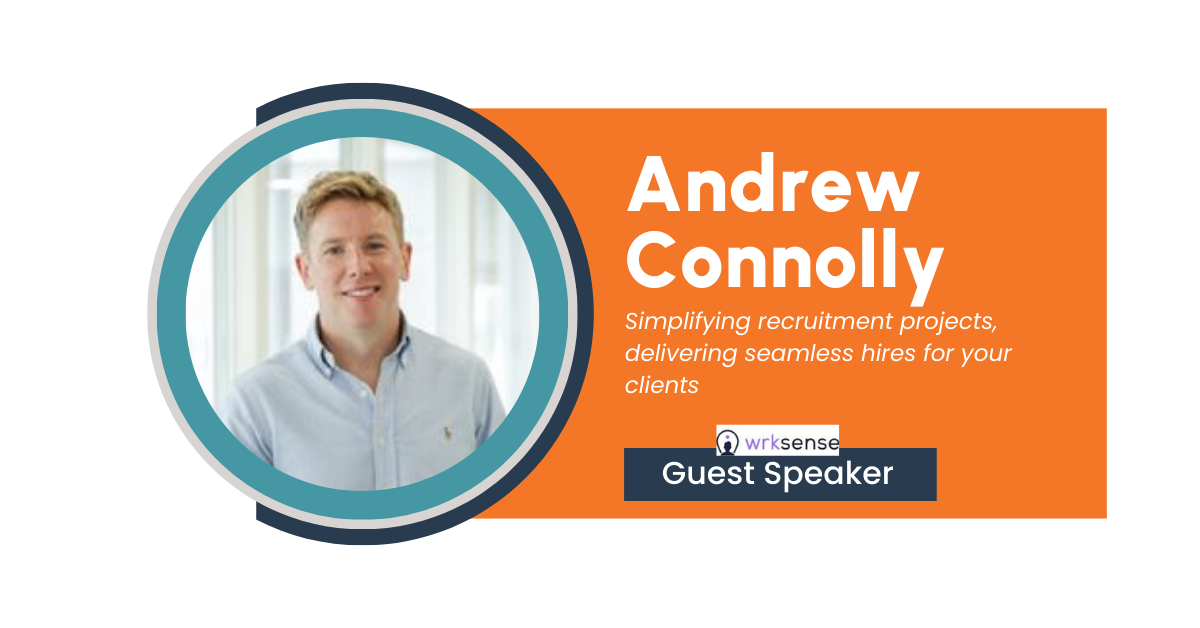
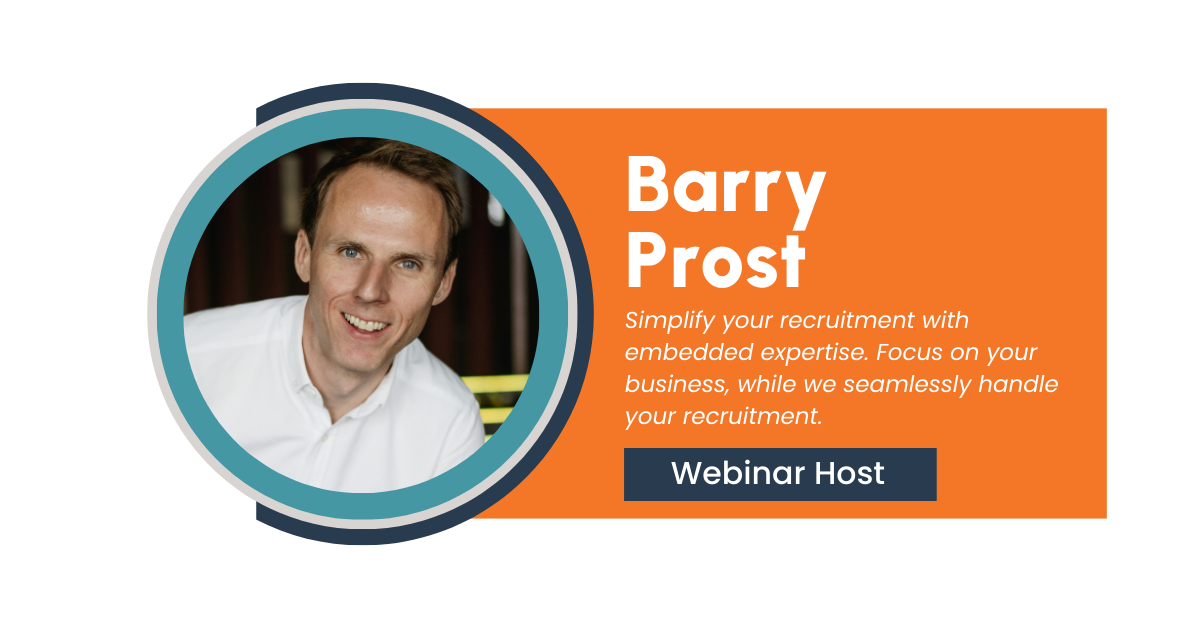
Discover more webinars

Author: Mark Loughnane, Chief Operating Officer
With over a decade of experience in operational leadership and talent strategy, Mark is passionate about helping organisations build strong employer brands that attract top talent. His article insights focus on transforming feedback into actionable strategies that enhance workplace culture and reputation.
In today’s competitive job market, actively acquiring and responding to reviews on platforms like Glassdoor and Indeed are no longer just nice-to-have feedback they’re an integral part of your employer brand and recruiting strategy. For HR professionals managing a company’s reputation, staying on top of these reviews and responding thoughtfully is critical to attract and retain the best talent.
Below, we explore why reviews are so influential and provide actionable steps on how employers can use them to their advantage, even when feedback is less than glowing.
Reviews Shape Your Employer Brand
More than ever, candidates rely on the internet to assess companies before applying. According to a Pew Research study, 79% of recent job seekers used online resources during their last job search, with 34% saying it was the most important tool available to them (Pew Research, 2015). For these job seekers, employee reviews are essential, with 86% of candidates researching company reviews and ratings when deciding where to apply (Glassdoor, 2020). And they don’t just skim—65% of users read at least five reviews before forming an opinion on a company (Glassdoor, 2020).
This makes it clear: your reviews on Glassdoor and Indeed are likely the first impression you’re giving to potential hires. They not only help job seekers evaluate whether they want to work for you, but they also offer a transparent glimpse into your company culture. In fact,90% of Glassdoor users say it’s important to work for a company that embraces transparency (Glassdoor, 2016).
The Business Case: How Reviews Impact Your Bottom Line
Responding to reviews is about more than just maintaining appearances—it directly impacts your hiring costs and employer brand. Companies with poor reputations end up paying more to attract talent. The average cost per hire is around $4,129, but businesses with a tarnished brand may pay 10% more per hire (Glassdoor, 2020), making a proactive approach to reviews a smart financial move.
Moreover, employers with a strong reputation attract better talent. 56% of companies ranked as “Best Places to Work” on Glassdoor consistently respond to reviews (Glassdoor, 2020). This kind of engagement pays off, as positive employer branding has been shown to have real-world financial benefits. A prime example is the 295% financial outperformance of the S&P 500 by companies rated as top workplaces between 2009 and 2019 (Glassdoor, 2020).
Handling Negative Reviews: An Opportunity in Disguise
Negative reviews can be daunting for any employer, but they present a crucial opportunity to demonstrate your company’s commitment to improvement. 62% of job seekers’ perceptions improve after seeing an employer respond to a review (Glassdoor, 2016). Instead of viewing criticism as a threat, HR professionals can use it as a platform to address concerns transparently and showcase your willingness to listen and improve.
Best Practices for Responding to Negative Reviews
- Acknowledge the Issue: People value authenticity. When responding to a critical review, don’t be defensive. Instead, acknowledge the problem raised. For example, you could say, “We understand that work-life balance was a concern during your time here, and we appreciate you bringing it up.”
- Provide Context or Solutions: Without making excuses, explain any measures taken to address the issue or any context that’s relevant. “We’ve since introduced flexible working options and revamped our time-off policy to help improve this balance.”
- Be Professional and Courteous: Even when faced with harsh criticism, taking the high road is crucial. Responding with respect will reflect positively on your company for other prospective candidates.
- Offer to Take the Conversation Offline: Not every issue can be resolved in public. By offering to discuss the matter privately, you demonstrate genuine interest in resolving the issue while maintaining professionalism. “We’d love to hear more and address this in greater detail. Please reach out to our HR department so we can help.”
Responding to Positive Reviews: Building Advocates
Positive reviews are equally important and present a fantastic opportunity to strengthen your employer brand. Happy employees become brand advocates, which helps attract the best-fit candidates. However, it’s not enough to simply enjoy the praise—responding to these reviews is equally important to reinforce a culture of engagement and appreciation.
Here’s how to maximise the impact of your responses to positive feedback:
- Say “Thank You”: Acknowledging the time an employee took to leave a review builds goodwill. “Thank you for your kind words, we’re thrilled you had a great experience!”
- Acknowledge Specific Feedback: Highlighting specific feedback, such as “We’re glad you enjoyed the collaborative atmosphere,” makes your response feel personalised and sincere.
- Highlight Future Opportunities: Take the opportunity to not only thank the reviewer but also provide insight into upcoming initiatives. “We’re continuing to work on improving even further, with new professional development programmes launching soon.”
The Strategic Impact of Responding to Reviews
Beyond improving your reputation among candidates, responding to reviews shows current employees that you care. Engaged employees are 87% less likely to leave their company (Glassdoor, 2018), and fostering this level of engagement helps prevent costly turnover. Moreover, employers who engage with feedback regularly tend to create a positive feedback loop: happy employees leave better reviews, which in turn attracts better candidates.
Even business partnerships can be impacted by your company’s reviews. For example, Salesforce considers Glassdoor and CEO ratings when evaluating companies for potential acquisitions (Glassdoor, 2020). This highlights just how far-reaching the influence of reviews can be—not just for hiring but for overall business strategy.
Create a Consistent Response Strategy
For HR professionals, consistency is key. Having a framework for responding to reviews will ensure you handle feedback in a timely and effective manner, while maintaining a professional tone. Consider these steps when setting up a review response strategy:
Consider these steps when setting up a review response strategy:
- Assign Responsibility: Who in your organisation will respond to reviews? Make sure this is a clearly defined role to maintain consistency.
- Determine the Tone: Establish a company-wide tone that reflects your culture—authentic, professional, and courteous.
- Set a Response Cadence: Decide how often you’ll respond to reviews. Being prompt is crucial, but you should also consider the volume of feedback to ensure it’s manageable.
Practical Tip: Monitor Employer Profile Activity
To make the most of your presence on platforms like Glassdoor and Indeed, it’s essential to track your Employer Profile Activity. This tool shows you important data, such as how many candidates are visiting your page, viewing job listings, and reading reviews. You might be getting a high volume of views, but if you’re not engaging with the reviews—both positive and negative—you could be letting valuable candidate interest go to waste. Make it a regular habit to check your page’s activity and ensure that your review responses align with the level of attention your profile is receiving.
Conclusion: Leverage Reviews as a Competitive Advantage
For HR professionals, managing reviews on Glassdoor and Indeed isn’t just a matter of damage control—it’s a powerful tool for enhancing employer brand, improving recruitment, and building stronger relationships with both current and prospective employees. Responding to reviews with transparency, professionalism, and a commitment to continuous improvement will not only shape how job seekers perceive your company but also help strengthen your business.
Taking the time to engage with reviews, both positive and negative, signals that your company cares about its employees and is open to feedback. By doing so, you can turn what may initially seem like a daunting task into a strategic advantage.
How Responding to Reviews Boosts Your Hiring – Key Statistics
79% of recent job seekers used online resources during their last job search (Pew Research, 2015)
34% saying it was the most important tool available to them (Pew Research, 2015)
86% of candidates researching company reviews and ratings when deciding where to apply (Glassdoor, 2020).
65% of users read at least five reviews before forming an opinion (Glassdoor, 2020).
90% of Glassdoor users say it’s important to work for a company that embraces transparency (Glassdoor, 2016).
56% of companies ranked as “Best Places to Work” on Glassdoor consistently respond to reviews
62% of job seekers’ perceptions improve after seeing an employer respond to a review (Glassdoor, 2016).
Engaged employees are 87% less likely to leave their company (Glassdoor, 2018).
Employer Branding Analysis Available Now
Understand how candidates perceive your brand
Receive expert recommendations for improvement.
Rent a Recruiter offers award-winning recruitment outsourcing services, providing global Talent Acquisition expertise in IT, Engineering, Manufacturing, Construction, Finance, and Healthcare. Our tailored solutions ensure seamless hiring as your business expands.
Recruitment is changing fast, and the next 20 years are going to bring even bigger transformations. Aging populations, smaller talent pools, and new AI tools are all reshaping how companies find and hire people. It’s not just about making the process more efficient; it’s about rethinking how we evaluate, attract, and keep the best talent in a competitive world.
The future of recruitment will require companies to adapt their strategies to balance the aging workforce and the shrinking number of new workers.
But how do we find the right candidates when there are fewer people to choose from? One solution could be using AI, but not in the way we are using it now.
Aging Populations and Recruitment Challenges

One of the major shifts shaping the future of recruitment is the reality of aging populations across many developed nations. As baby boomers exit the workforce, companies are left grappling with a shrinking pool of younger candidates to fill their roles. This demographic change places a dual pressure on recruitment efforts: not only is the pool of available talent becoming smaller, but organisations are also finding themselves in need of innovative strategies to attract and retain seasoned workers who bring valuable experience. To meet this challenge, companies are increasingly turning to AI-powered tools to identify “hidden gems” among non-traditional candidates and streamline processes that appeal to both younger digital natives and older, experienced professionals. The goal is to create a balanced workforce that taps into the strengths of multiple generations, ensuring that critical knowledge and skills remain in the organisation while also welcoming fresh perspectives. This means that future recruitment strategies will need to prioritise diversity in age and skillset, focusing on how AI can support a multi-generational workforce in adapting to new ways of working and continuous learning.
💡Pro Tip:
Consider creating flexible roles or mentorship programs that encourage seasoned employees to stay longer while sharing their expertise with younger team members.
💡Action Point:
Audit your current workforce demographics and skill gaps. Identify roles where experience is crucial and build a recruitment plan that attracts and retains experienced talent alongside new hires.
AI in Future Recruitment: Levelling the Playing Field or Raising New Challenges?

As AI becomes more common, more job seekers are using it to write resumes and cover letters. In fact, surveys show that around 30% of job seekers use AI tools like ChatGPT to help with their applications. This makes things more equal, but it also lowers the bar. If everyone is using AI to make their applications look perfect, how can recruiters tell who is truly talented and who just used a smart AI tool?
This is a tricky problem for employers. AI is making it harder to evaluate people based on the usual markers like cover letters and resumes, which can all end up looking pretty similar. As a result, recruiters are moving beyond the traditional resume and looking for other ways to assess candidates.
Companies like Unilever use gamified AI-driven assessments through platforms like Pymetrics, which evaluate candidates on various soft skills through short games that measure problem-solving, adaptability, and social intelligence. This unbiased, skills-based evaluation enables companies to reach a broader talent pool and reduce unconscious bias in hiring.
💡Consider This:
Leverage gamified AI assessments to create a fair and standardised hiring process, ensuring that skills are evaluated without reliance on traditional resumes, which may unintentionally favor certain groups. Use platforms like Pymetrics or HireVue to standardise skill assessments across diverse candidate backgrounds.
💡Action Point:
Conduct a pilot with AI-driven gamified assessments for entry-level positions. Review the outcomes to refine the process before expanding it to more roles, ensuring AI tools align with fair and inclusive hiring practices.
Skills-Based Hiring: The Shift in Future Recruitment from Credentials to Competencies

.The future of recruitment is based on skills. Instead of relying only on resumes that might not accurately show what someone can do, companies are now using practical skills assessments and problem-solving challenges. This lets employers see how candidates think and tackle real-world situations something that tells them more than just grades or qualifications.
One trend that’s helping with this skills-based approach is gamification. Companies are creating interactive games and simulations to give candidates a chance to show their skills in fun, hands-on ways. For example, a software engineer might show their coding skills through a live problem-solving challenge, or a project manager could demonstrate their ability to prioritise tasks through a simulation game.
As the talent pool continues to shrink because of demographic changes and more AI-generated applications, gamification and skills assessments are going to become more important. These tools help recruiters assess a wider range of candidates, even those who might not have traditional qualifications. They also help recruiters sift through AI-generated resumes to find people who actually have the creativity and problem-solving skills needed to succeed.
These types of assessments give employers a better idea of a candidate’s potential not just what they’ve achieved in the past. It’s a big step towards looking at qualities like adaptability, creativity, and problem-solving, which are crucial in a world that’s changing fast.
Employers are also increasingly focusing on how the future of recruitment can benefit from AI’s capability to personalise and streamline the candidate experience, making the hiring process more engaging.
AI is also being used to find “hidden gems” – candidates who might not meet all the traditional job requirements but have the potential to do great work. AI can look for qualities like adaptability and emotional intelligence, which are often more important for long-term success than just technical skills.
💡Pro Tip:
Embrace gamified skills assessments to evaluate potential and adaptability, especially in roles where soft skills like critical thinking and creativity are essential. Companies can use interactive simulations and role-specific games to assess candidates on real-world scenarios rather than relying on formal qualifications alone.
💡Action Point:
Identify critical skills for key roles, then design assessments that target those specific abilities. This will give you a clearer picture of a candidate’s real-world potential. Begin incorporating one or two simple skills-based assessments in your interview process, such as a problem-solving task relevant to the role.
Adapting to an AI-Powered Future of Recruitment

For candidates, the rise of AI means they have to do more than just submit a polished resume. Showing their skills in a live, interactive way is becoming more important. Problem-solving assessments are a response to this shift—recruiters want to see how someone thinks in real-time, not just what they’ve done in the past.
On the employer side, it’s time to use AI not just to save time, but to make better decisions. AI tools can help analyse interview responses, watch body language in video interviews, and even track small expressions to see if someone is really engaged. This pushes us into a future where human intuition is supported by data-driven insights.
💡Consider This:
Regularly review how AI is used in recruitment. What metrics does it prioritise? Make sure it aligns with your core values and doesn’t unintentionally filter out diverse candidates.
💡Action Point:
Develop an “AI-readiness” plan that includes evaluating current tools and identifying where AI could streamline processes. Involve team members early to ensure buy-in and familiarity.
A Long-Term Forecast for Future Recruitment: The Human-AI Partnership in Hiring
Looking ahead, recruitment will be less about who has the best-looking resume and more about how well someone can handle real challenges. The move to skills-based hiring, along with AI enhancements, means the future will focus more on a complete evaluation of candidates. Hiring will become a partnership between AI and human recruiters—AI will handle the analysis, but people will still make the final decisions based on their judgment.
In the coming years, recruitment will require both employers and candidates to adapt—candidates will need to prove themselves beyond polished applications, and employers will need to create hiring processes that focus on problem-solving and adaptability. It’s a future where AI helps, but doesn’t replace, human judgment in finding the right person for the right job.
For more information on how partnering with our team can help drive your companies growth, contact our team today for a friendly chat.
With award-winning recruitment outsourcing, Rent a Recruiter delivers global Talent Acquisition services across IT, Engineering, Manufacturing, Construction, Finance, and Healthcare. We provide embedded solutions to meet your talent needs as your business scales up.
Recruiting a Diverse Workforce
Skills shortages are putting more pressure on industries than ever, businesses need to get creative. One key strategy is learning how to recruit a diverse workforce to tap into fresh talent pools. This guide explores the opportunities that come from addressing skills shortages, offering practical ways to diversify your talent and build an inclusive culture that supports that diversity. By embracing diversity and inclusion, businesses can meet their immediate talent needs while also becoming more innovative, competitive, and ready for the future.
Opportunity: Addressing Skills Shortages Through Diverse Talent
The global labor market is facing significant talent shortages across industries. According to ManpowerGroup’s 2023 Talent Shortages Survey, 69% of employers are struggling to fill roles, highlighting the urgent need for new approaches to talent acquisition. In the construction industry, for example, the shortfall in skilled workers is exacerbated by long-term trends like a decline in apprenticeships and an aging workforce.
However, these challenges also present an opportunity. Understanding how to recruit a diverse workforce by reaching out to underrepresented groups—including women, minorities, displaced individuals, and refugees enables businesses to access new skills and perspectives that drive innovation and long-term growth. Hiring from diverse talent pools not only fills vacancies but also leads to improved decision-making, increased creativity, and higher profitability.
Diversification Strategies: Attracting and Retaining Diverse Talent
When considering how to recruit a diverse workforce, businesses must first address the inclusiveness of their hiring processes. Start by ensuring that job descriptions are skill-based and free from bias, removing barriers like unnecessary years of experience and gendered language. Using tools to scan and adjust the language of job postings can make positions more accessible to a wider range of candidates.
Additionally, sourcing candidates through diverse recruitment channels helps to reach a broader audience. For example, targeting female graduates in traditionally male-dominated industries, such as construction, has proven effective in increasing gender diversity. Glenveagh, a leader in construction, has seen significant success by setting clear diversity targets and investing in inclusive recruitment strategies, resulting in 33% of their workforce being women, compared to the industry average of just 9%.
Creating an Inclusive Work Culture: Supporting Diverse Talent
Understanding how to recruit a diverse workforce is only the first step; creating an inclusive work culture is crucial for retention. Organisations must develop policies that promote belonging and accommodate diverse needs, such as flexible work arrangements, family-friendly policies, and support systems like buddy programs.
Employee network groups, such as women’s networks, and initiatives like flexible parental leave, menopause policies, and multicultural facilities (e.g., faith rooms) are practical steps businesses can take to support their employees’ diverse backgrounds. Providing clear pathways for career growth through training and mentorship programs further ensures that diverse employees feel valued and supported in their long-term career development.
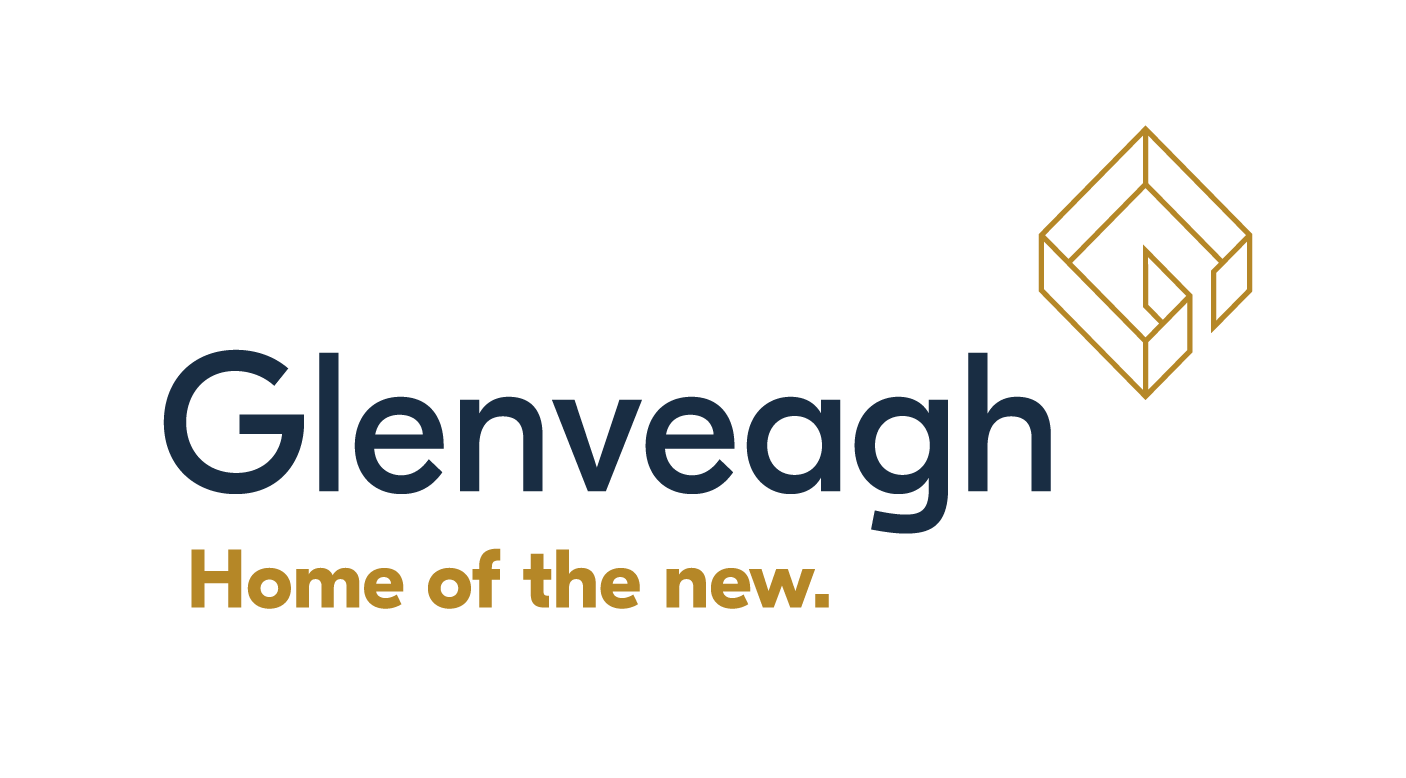
Case Study: Glenveagh’s Journey to Inclusivity
In 2023, Glenveagh achieved 33% female representation within their workforce, far surpassing the industry average of 9%. This success was driven by a clear diversity strategy that included setting a target for female graduates, developing family-friendly policies, and creating employee resource groups. Their inclusive approach not only improved representation but also enhanced overall employee satisfaction and retention, especially among women in leadership roles.
Key Recommendations for HR Leaders
- Use Data to Make the Case for Diversity: Share both internal data and external research (e.g., McKinsey studies) to demonstrate the business case for diversity. Highlight the financial and operational benefits of a diverse workforce.
- Create Champions of Diversity: Engage senior management by identifying diversity champions within the organisation who can drive initiatives and advocate for change at the executive level.
- Invest in Cultural Competency: Equip managers with training on cultural intelligence, unconscious bias, and inclusive communication. This ensures that all employees, regardless of background, feel supported and included in the workplace.
- Offer Support Systems: Provide tools like reasonable accommodation passports for employees with disabilities, buddy systems for new hires, and comprehensive family-friendly policies.
- Collaborate with External Partners: Engage with organisations like the Open Doors Initiative or Talent Beyond Boundaries to source diverse talent and receive guidance on best practices for integrating marginalised groups into the workforce.
- Learn How to Recruit a Diverse Workforce: Ensure that your recruitment team is trained and aware of best practices for attracting diverse talent. Tailor your recruitment processes to be inclusive, utilising resources like external partnerships and recruitment channels that target underrepresented groups.
Practical Steps for Implementing Diversity and Inclusion Strategies
- Set Clear Diversity Targets: Define measurable goals for diversity within your workforce, such as gender, ethnic, or ability-based representation in leadership or entry-level positions.
- Evaluate Current Processes: Regularly audit your recruitment and retention processes to ensure they align with diversity goals and remove unintentional biases.
- Provide Mentorship and Development Programs: Establish pathways for career progression, particularly for women, minorities, and underrepresented groups, through mentoring and leadership training.
- Communicate Diversity Efforts: Ensure your diversity and inclusion initiatives are well-publicised both internally and externally. Use your careers page and social media to highlight your progress and commitment.
- Invest in Leadership Training: Equip senior leaders with the knowledge and tools to foster an inclusive workplace culture. This can include workshops on unconscious bias, inclusive leadership, and supporting diverse talent.
Additional Strategies for Inclusive Hiring
- Skill-Based Descriptions: Focus on skills, behaviors, and values alignment rather than setting strict criteria like “years of experience,” which can limit applications from qualified but non-traditional candidates.
- Transparency: Map out the entire recruitment process on the company website, detailing what candidates can expect, and remove barriers that may intimidate or discourage diverse candidates from applying.
- Inclusive Language: Regularly review and update job descriptions to ensure that they are free from biased or exclusionary language.
- Leverage Success Stories: Share testimonials and stories of employees from diverse backgrounds to humanise your inclusion initiatives and demonstrate their real-world impact on the business and individuals.
Diversity Metrics & Reporting
Tracking diversity metrics is essential to ensure progress and accountability. Regularly reporting these metrics to leadership can help identify areas for improvement and demonstrate the return on investment (ROI) for diversity efforts.
Tracking Progress:
- Surveys and Tools: Implement anonymous surveys and tracking tools to measure the diversity of your candidate pipeline and workforce.
- KPIs: Use key performance indicators (KPIs) such as retention rates, promotion rates, and engagement scores for diverse groups.
- Annual Reports: Present diversity metrics in annual reports to show commitment to inclusion and to provide transparency.

Role of Leadership in Driving Inclusion
Senior leadership buy-in is crucial for the success of diversity and inclusion initiatives. Leaders should play an active role in fostering an inclusive culture.
- Lead by Example: Participate in D&I initiatives, attend workshops, and promote inclusive behaviors.
- Allocate Resources: Ensure there are enough resources (budget, time, personnel) dedicated to diversity programs.
- Communicate Regularly: Frequently communicate the importance of inclusion across all levels of the organisation, reinforcing the company’s commitment to D&I.
Future Outlook: Preparing for Tomorrow’s Workforce
As industries continue to evolve, businesses must prepare for future workforce trends, including:
- Remote Work: Remote and hybrid work environments are increasingly attractive to younger generations and diverse candidates. Consider flexible work models to meet employee expectations.
- Global Talent Acquisition: With the rise of digital platforms and international recruitment programs, tapping into global talent pools (including refugees, displaced individuals, and underrepresented groups) will become crucial.
- Generation Z and Millennials: These generations highly value diversity and inclusion in the workplace. Offering a diverse and inclusive culture can be a key factor in attracting and retaining top talent from these groups.
Key Statistics from our Recent Diversity Webinar
Webinar “Diversify your talent pipeline for commercial success”
Global Skill Shortages:
According to ManpowerGroup’s 2023 Talent Shortages Survey, 69% of employers globally report difficulty in filling roles across all sectors.
Construction Industry Shortages:
Ireland’s Construction Industry requires 50,000 new entrants by 2030 to meet housing targets.
In 2023, only 1,500 new apprentices joined the construction sector, far below the needed level to sustain growth and meet demand.Educational Imbalance in Ireland:
Ireland has the highest per capita of third-level degree graduates in Europe, yet there remains a significant shortfall in those entering trades, compared to countries like Germany.
Diversity and Performance:
Companies with diverse workforces are 35% more likely to outperform their competitors financially (McKinsey).
97% of employers who have hired refugees or displaced talent recommend it, with 57% reporting enhanced competitiveness in their markets (LinkedIn research).
Gender Representation in Construction:
The average female representation in the construction industry in Ireland is only 9%. However, at Glenveagh, female representation has risen to 33%, including 43% women on the board of directors.
Talent Retention:
Organisations hiring displaced talent through international programs reported retention rates of 93%–97% after one year of employment.
Hiring and Inclusive Culture:
Companies that actively embrace diversity and inclusive practices see a 5% improvement in decision-making processes, contributing to better business outcomes (McKinsey).
Ireland’s Employment Context:
Ireland is currently operating at full employment, making it critical for businesses to explore non-traditional talent pools, such as international talent, refugees, and underrepresented groups.
Tools to Help with Job Descriptions
- Language Analysis Tools: Free Online Tools: Using a free online tool to analyse job descriptions for gender-coded language. These tools help identify language that may unconsciously deter certain genders from applying, such as overly masculine or feminine wording. Some examples of such tools include:
- Textio: An augmented writing platform that helps to optimise job descriptions and avoid gender bias.
- Gender Decoder: A simple tool that scans text for gender-coded words to ensure neutral language.
- AI Tools for Rewording and Clarity: AI Tools like ChatGPT are recommended to help rephrase questions and rewrite job descriptions in a more inclusive and neutral manner. This can help employers eliminate biased language, create clearer job descriptions, and open the position to a broader talent pool.
Addressing the current skills shortages requires a proactive, inclusive approach to recruitment and retention. By diversifying talent pools, businesses not only fill critical roles but also create a culture of innovation and resilience. Knowing how to recruit a diverse workforce and fostering an inclusive environment where all employees can thrive is key to long-term commercial success. By committing to diversity, equity, and inclusion, organisations can build a more dynamic, competitive, and future-ready workforce.
How to Recruit a Diverse Workforce FAQs:

What are the first steps HR leaders should take to recruit a diverse workforce?
HR leaders should start by evaluating their current hiring processes. This means removing biases from job descriptions, diversifying recruitment channels, and ensuring inclusive hiring practices. It’s also essential to set clear diversity goals and measure progress regularly to hold the organisation accountable.
How can we ensure our workplace is inclusive to retain diverse talent?
Retention starts with creating a culture of inclusion. This includes providing flexible work arrangements, offering mentorship programs, creating employee resource groups, and fostering an environment where diverse voices are heard and valued. Regularly checking in with employees from underrepresented groups helps ensure their needs are being met.
How can employers measure diversity within their organisation, without this feeling intrusive to employees?
To measure diversity without making employees feel uncomfortable, employers can use anonymous and voluntary surveys, allowing staff to self-identify their demographics.
It’s crucial to emphasise confidentiality and explain that the data will support diversity efforts.
Ensuring transparency and choice is key to fostering trust.
What are the challenges HR leaders face in recruiting a diverse workforce?
One of the biggest challenges is overcoming unconscious bias in recruitment processes. HR leaders must be intentional about recognising and addressing these biases by providing training for hiring managers. Another challenge is sourcing talent from diverse backgrounds, which can require tapping into new recruitment platforms and networks.
How can we measure the success of our diversity recruitment efforts?
Tracking key metrics such as the diversity of your applicant pool, hiring rates, retention, and promotion of diverse candidates is crucial. Regularly conducting employee engagement surveys and gathering feedback from diverse groups can also provide insights into how inclusive your workplace is and where improvements can be made.
Talk to our team
Find out how we can help!
Employer Branding Definition, Benefits and Strategies
Employer branding it’s a term you’ve likely heard often. But what does it mean, especially for small to medium-sized businesses (SMEs)?
Employer branding refers to how your business is perceived by potential and current employees. It includes everything from your website’s career page to employee reviews on platforms like Glassdoor and Indeed, and your social media presence. Simply put, it’s how you market yourself as an employer to attract, engage, and retain the best talent.
Importance of Employer Branding for Small and Medium-Sized Businesses
For SMEs, employer branding is crucial for standing out in a competitive job market. With larger companies offering attractive salaries, benefits, and perks, small businesses need to highlight their unique advantages, such as a more inclusive company culture, flexible working environments, and greater opportunities for personal growth. These are the factors that can turn potential candidates into loyal employees.
Employer branding isn’t just about attracting new talent. It also helps improve employee retention, reducing turnover costs and fostering a more committed workforce. For small businesses, where every hire counts, employer branding can make the difference between thriving and merely surviving.
Components of Effective Employer Branding
An effective employer branding strategy involves several key components that together shape the perception of your business.
Website Optimisation for Employer Branding
Your company’s website is the first place most candidates will visit when researching your business. Ensure that your career page reflects your company values, mission, and workplace culture. Include testimonials from current employees, videos of day-to-day life at the office, and detailed job descriptions. Offering a transparent and attractive portrayal of your business can inspire job seekers to apply.
Leveraging Social Media for Employer Branding
Social media is a powerful tool for employer branding. Platforms like LinkedIn, Facebook, and even Instagram provide opportunities to showcase your company culture, achievements, and team dynamics. Be consistent in your messaging, and don’t shy away from engaging with followers by responding to comments and messages. Sharing behind-the-scenes content, such as team events or employee spotlights, humanises your brand and strengthens its appeal.
Managing Online Reviews for Employer Branding
Sites like Glassdoor and Indeed can make or break your employer branding. Potential candidates often check these platforms to see how current and former employees rate their experience with your company. It’s vital to monitor and respond to reviews regularly—whether positive or negative. For negative feedback, show that you’re listening and willing to improve. For positive reviews, express gratitude. This interaction demonstrates transparency and commitment to employee satisfaction.
Writing Job Postings That Reflect Company Values
When writing job postings, it’s important to go beyond listing qualifications and responsibilities. Highlight what makes your company unique. Talk about your culture, values, and what a day in the life at your business might look like. This gives candidates a sense of who you are, making your posting stand out from countless others.

Barry Prost
Managing Partner
15 years’ experience recruiting senior managers for major international consultants and contractors. Barry is one of the founding directors of Propel. Prior to this, Barry worked for 10 years for Randstad, the 2nd largest recruitment organisation in the world. Managing teams across the UK and Ireland & delivering recruitment solutions to major clients. Barry is a graduate in International Business from Trinity College Dublin. He has a Masters in Business Administration (MBA) from the Smurfit School of Business.
“My favourite food is anything with quinoa”
Talent Attraction in a Competitive Market
Competing Against Larger Companies for Talent
In today’s market, SMEs face stiff competition from multinational corporations offering high salaries, stock options, and state-of-the-art offices. However, small businesses have their own strengths, such as a close-knit culture, opportunities for growth, and more flexibility. By focusing on these strengths and communicating them clearly, SMEs can appeal to talented candidates looking for more than just a paycheck.
Highlighting Unique Company Strengths and Culture
To attract talent, it’s essential to showcase the unique aspects of your business that make it a desirable place to work. Whether it’s a flexible work environment, strong community values, or opportunities for professional development, these should be emphasised early in the recruitment process. Employees today are looking for a company that aligns with their personal values and offers a sense of belonging.
Employer Value Proposition (EVP) for SMEs
Developing a Strong EVP for Small and Medium Businesses
An Employee Value Proposition (EVP) is the core of your employer branding. It’s the promise you make to your employees about what they can expect from working at your company. This includes everything from compensation and benefits to work-life balance and company culture. For SMEs, a strong EVP can help differentiate you from competitors and attract talent who are looking for more meaningful work.
The Role of Pay, Benefits, and Work Culture in Employer Branding
While larger companies may have the resources to offer higher salaries and more benefits, small businesses can focus on offering a better work-life balance, a more supportive company culture, and opportunities for personal growth. By focusing on these areas, SMEs can create a more attractive overall package for potential employees.
Strategies for Overcoming Talent Shortages
How SMEs Can Compete in a Talent-Short Market
The talent shortage in many industries means that businesses must work harder to attract and retain skilled employees. SMEs can overcome this challenge by focusing on what makes them unique and by offering non-monetary benefits that appeal to a modern workforce, such as flexible working arrangements and a positive company culture.
Developing Perks That Appeal to the Modern Workforce
Modern workers value perks that improve their quality of life, such as mental health support, professional development opportunities, and flexible working hours. Small businesses can develop these perks as part of their employer branding strategy to attract talent even in a competitive or talent-short market.
Managing Employer Branding Online
Building and Managing Your Online Employer Presence
Your online presence is critical for employer branding. This includes your website, social media accounts, and any employee review sites. Be proactive in managing your online reputation by creating engaging content, responding to reviews, and showcasing your company’s values and achievements.
Responding to Online Reviews and Feedback
Effective employer branding requires a proactive approach to managing reviews on platforms like Glassdoor. Acknowledging both positive and negative feedback demonstrates that your business values transparency and is committed to improving the employee experience.
Employer Branding for Staff Retention
How Employer Branding Helps Retain Top Talent
A strong employer brand not only attracts talent but also helps retain it. Employees are more likely to stay with a company that they feel proud to work for and that aligns with their values. SMEs can use employer branding to improve staff retention by fostering a supportive and engaging workplace culture.
Enhancing Employee Engagement Through Employer Branding
Employer branding can also improve employee engagement by creating a stronger connection between employees and the company. Regularly highlighting company achievements, recognising individual contributions, and fostering a sense of community can all contribute to higher levels of employee engagement.
Leveraging Employer Branding for Growth
Employer Branding’s Role in Business Expansion
As your business grows, employer branding becomes even more important. A strong employer brand can help attract the right talent to support your growth, improve employee retention, and enhance your overall reputation in the marketplace.
How SMEs Can Scale Employer Branding Over Time
Scaling employer branding efforts is essential as your company expands. Start by creating a solid foundation with a strong EVP and consistent messaging. As your company grows, continue to develop your employer branding strategy by integrating new technologies, expanding your online presence, and adapting to changes in the labour market.
The Role of HR in Employer Branding
Involving HR Teams in Employer Branding Initiatives
Your HR team plays a critical role in shaping your employer brand. From recruiting to employee engagement, HR should be involved in all aspects of employer branding. This includes gathering feedback from employees, managing the company’s online reputation, and ensuring that your EVP is consistently communicated across all channels.
Encouraging Feedback and Employee Engagement
Gathering employee feedback is a key part of employer branding. Regular surveys, exit interviews, and one-on-one discussions can provide valuable insights into what employees appreciate about working for your company and where improvements are needed. Encouraging feedback shows employees that their opinions are valued, which in turn enhances their engagement and loyalty.
Measuring the Success of Employer Branding
Key Metrics to Track for Employer Branding Success
Measuring the success of your employer branding strategy is essential to ensure that it’s effective. Key metrics to track include the number of job applications received, the quality of candidates, employee retention rates, and employee engagement scores. These metrics will help you determine what’s working and where improvements are needed.
Evaluating ROI of Employer Branding Efforts
Employer branding can be an investment, but it’s one that pays off in the long run. By tracking your employer branding metrics, you can evaluate the return on investment (ROI) and make informed decisions about where to focus your efforts.
Challenges and Common Pitfalls in Employer Branding
Common Employer Branding Mistakes for SMEs to Avoid
Some common mistakes that SMEs make with employer branding include ignoring negative online reviews, failing to communicate their company values, and not engaging with potential candidates through social media. Avoid these pitfalls by being proactive, consistent, and transparent in your employer branding efforts.
Overcoming Budget Constraints in Employer Branding
SMEs often operate with limited budgets, but employer branding doesn’t have to be expensive. Focus on leveraging low-cost, high-impact strategies, such as engaging with candidates on social media, improving your online presence, and building a positive company culture that resonates with employees.
Future Trends in Employer Branding for SMEs
The Evolution of Employer Branding Post-2024
As technology continues to evolve, so will employer branding. In the coming years, we can expect to see more companies leveraging AI and data analytics to refine their employer branding strategies. Additionally, remote work and flexibility will continue to be major factors in attracting talent.
Adopting New Technologies in Employer Branding Efforts
From virtual job fairs to AI-driven recruitment platforms, new technologies are changing the way businesses approach employer branding. SMEs should stay ahead of these trends by adopting tools that streamline the hiring process, enhance employee engagement, and improve their overall employer brand.
Employer Branding Resources
Practical strategies. Real-world insights. Actionable takeaways.
No-cost quick wins to elevate your brand perception immediately
Low-investment tools and tactics that deliver measurable results
Long-term strategies to build a sustainable employer brand that attracts and retains top talent
Real-life examples from businesses like yours
Employer Branding For SME’s FAQs:

What is employer branding for small businesses?
Employer branding refers to how a company presents itself to current and potential employees. For small businesses, it involves showcasing unique qualities such as company culture, flexibility, and opportunities for growth to attract talent.
Why is employer branding important for SMEs?
Employer branding helps SMEs compete with larger corporations for talent. It also improves employee retention and engagement, making it easier for smaller businesses to build a strong, committed workforce.
How can a small business improve its employer branding?
Improving employer branding can be done by developing a strong EVP, managing online reviews, using social media to showcase company culture, and creating a compelling career page on the company website.
What is an Employee Value Proposition (EVP)?
An EVP is a statement that summarises what a company offers to its employees, including benefits, culture, and growth opportunities. It’s a key part of employer branding and helps attract and retain talent.
How does employer branding impact talent attraction?
Employer branding plays a critical role in talent attraction by communicating what makes a company a desirable place to work. Strong employer branding can help small businesses stand out from competitors, even those offering higher salaries.
Can employer branding help with staff retention?
Yes, employer branding improves staff retention by creating a positive work environment where employees feel valued. Engaged employees are more likely to stay with the company long-term.
Rent a Recruiter, an award-winning outsourced recruitment provider, specialises in Talent Acquisition for IT, Engineering, Manufacturing, Construction, Finance, and Healthcare industries. Our seamless embedded solutions help you secure the talent your growing business requires.
Free Webinar

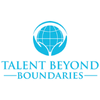


Webinar Playback:
How to Diversify your Talent Pipeline for Commercial Success
What’s The Webinar About?
During this webinar we explore how inclusive hiring, skills migration, and gender diversity can not only strengthen your talent pipeline but also drive innovation, improve decision-making, and boost profitability.
Our expert panelists share insights from their work with marginalised communities, refugees, and gender diversity initiatives, offering actionable steps you can take to build a more inclusive and commercially successful organisation.
Diversifying your Talent Pipeline Speakers:

Paula Voiseux
HR Business Partner
Glenveagh
Paula is HR Business Partner at Glenveagh, where she leads initiatives in Talent Acquisition, Performance Management, Employee Engagement, ED&I, and Wellbeing. With over 15 years’ experience in HR, her areas of interest include workforce planning, diversity and inclusion, onboarding, and enhancing employer branding to attract top talent. Glenveagh is a listed Irish construction company focused on delivering high quality homes in flourishing communities. They recently became the first construction company to attain the Gold Investors in Diversity Award from the Irish Centre for Diversity.

Tegwyn Stephenson
Ireland Country Lead
Talent Beyond Boundaries
Tegwyn has extensive experience in the area of migration and more than 20 years’ experience working in stakeholder and civic engagement, policy and legislative reform, research and advocacy. At TBB, she is responsible, with project partners, for the management and delivery of two EU-funded refugee labour migration programmes. To date in 2024, these programmes have resulted in the relocation of seven individuals to Ireland.

Claire Hayes
Head of Policy & Research
Open Doors Initiative
Claire is committed to fostering equitable opportunities through the development of inclusive and impactful policies, shaped by both research and personal lived experiences. With a background spanning communications, political inclusion, and strategy, she brings a diverse skillset to her work.
Claire is currently undertaking a master’s degree in Social Policy at University College Cork. Driven by a passion for positive change, Claire endeavours to bridge the gap between theory and practice, bringing her academic insights into real-world impact at ODI.
Webinar Playback
View Our Youtube Channel for More!

Olivia Knight
“I recently attended a webinar hosted by Rent a Recruiter and I found it incredibly insightful. The session provided practical tips on how to fill tough positions and helped me to understand the key challenges faced by businesses in this area. Their webinars are always highly relevant to businesses, regardless of size or sector, and feature excellent panelists who share invaluable advice. I highly recommend Rent a Recruiter for their exceptional and informative webinars.“
